Then, for Asian Pacific American Heritage Month last May, I made it a point to read only books written about the Asian American experience by authors who were themselves Asian American and that were available in the library. I found that a lot of the books I wanted to read were just not easily available even though they appeared on lots of lists recommending them.
For Native American Heritage Month, the situation was no different. Lots of recommendations for hard to find books that looked really interesting. Luckily, all public libraries can do inter-library loans and the books below are available in libraries around the country.
Legends:
Chukfi Rabbit's Big, Bad Bellyache: A Trickster's Tale
told by Greg Rodgers, illustrated by Leslie Stall Widener
Cinco Punto Press, 2014, 40 pages, age 5+
Chukfi Rabbit is a wily rabbit. He's a lazy boy, but he sure does like to eat. So when Ms. Shukata Possum needs a new house, she asked her friends to help, promising dinner with fresh homemade butter after the work is done. Well, Chukfi Rabbit loves butter, but he does not like working. Can he find a way to eat that tempting homemade butter without doing any work? Remember, he's a trickster. Chukfi Rabbit is an old Choctaw tale was discovered among Choctaw interviews in the Oral History Archives at the Oklahoma History Center by Greg Rodgers while he was doing other research. This is a trickster tale that will bring a smile to anyone reading it even as it teaches an important lesson about being a good neighbor. And a real feeling of authenticity permeates it in the Choctaw names of the animals, the clothing they wear and the food the food they eat. Widener's detailed illustrations are all expressively depicted in a soft pastel palette. Author and illustrator both members of the Choctaw Nation.
Rabbit's Snow Dance, a traditional Iroquois story
told by James & Joseph Bruchac, illustrated by Jeff Newman
Dial BFYR, 2012, 32 pages, age 4+
It's summertime and long-tailed Rabbit is longing to be able to eat the tasty leaves and buds that grow on the tops of trees. But how to reach them? Rabbit decides to make it snow by singing his special snow song, after all, it always brings snow in the winter when he sings it. Taking his drum into the forest, Rabbit drums, dances and sings "I will make it snow,/AZIKANAPO!" and sure enough, flakes being to fall. So Rabbit keeps singing and dancing and the snow piles up higher and higher until at last, he can reach the tops of the trees. But now Rabbit was really tired from all that singing, dancing, and drumming, so he decides to take a nap in the treetop before he eats. But remember, it's summer so while he naps, the snow melts away. What a surprise Rabbit has when he wakes up and steps off the tree branch expecting snow. As he falls, bits of his tail get caught in the tree branches, and he lands a short-tailed rabbit. This is another trickster rabbit tale, although there is no explanation about its origin. It's a fun read aloud and the stylized watercolor, gouache and illustrations are a whimsical as the rabbit's antics. The Bruchacs, father and son, are of Abenaki heritage, a tribe of Algonquian-speaking people in the northeastern part of North America.
Fiction:
Hungry Johnny by Cheryl Minnema, illustrated by Wesley Ballinger
Minnesota Historical Society Press, 2014, 32 pages, age 4+
Young Johnny sure does like to eat, especially after playing outside in the snow. Going home, he tells his Grandma "I like to EAT, EAT, EAT." Grandma is cooking, and there's even fruit and sweet rolls, but Johnny has to wait to eat. There is a community feast that evening they will be going to. Waiting is hard for a hungry boy, but after a long drive, there is "a l-o-n-g [Ojibwe] prayer," then the elders must eat first. Finally is it time for Johnny and Grandma to sit at the long community table, but just as he gets ready to eat, Johnny sees his Grandma's very old friend Katherine come arrive. Johnny knows just what to do - he jumps up and offers his chair to Katherine, telling her "it's time to EAT, EAT, EAT." Johnny may want to EAT, EAT, EAT, but by the time he sits down at the table, he has learned some important lessons about thankfulness, patience and respect, thanks to his loving Grandma. Cheryl Minnema and Wesley Ballinger are both members of the Milles Lacs Band of Ojibwe.
Jingle Dancer by Cynthia Leitich Smith,
illustrated by Cornelius Van Wright and Ying-Hwa Hu
Morrow Junior Books, 2000, 32 pages, age 4+
More than anything, Jenna would like to jingle dance at the next pow-wow just like her Grandma Wolfe. She practiced and practiced and Grandma Wolfe even said Jenna could dance Girls. Which would be wonderful except there just wasn't enough time to mail-order the tins for rolling jingles so Jenna's dance wouldn't sing like her Grandma's. Unless...Visiting different women and relatives in her intertribal community, Jenna manages to borrow enough jingles for her dress and dedicates her dance to each woman who helped her. This is a lovely intergenerational story about an important shared tradition in Jenna's family. The language of the story is as lyrical as the beautifully done full color watercolor illustrations. Leitich Smith has incorporated some interesting cultural elements of Jenna's life as a member of the Muscogee (Creek) Nation, expanding them in her not-to-be-skipped-over Author's Note at the end of the story, along with a Glossary for unfamiliar words. Like Jenna, Cynthia Leitich Smith is also member of the Muscogee Creek Nation.
Saltypie, a Choctow Journey from Darkness into Light
by Tim Tingle, illustrated Karen Clarkson
Cinco Puntos Press, 2010, 32 pages, age 6+
Saltypie is Tim Tingle's homage to his strong, loving grandmother and how she faced the difficulties and problems she encountered, and passed that on to her family. A member of the Choctaw Nation of Oklahoma, in 1915, his Mawmaw moved to Texas with her husband and 2 year old son. One morning Mawmaw was standing on the porch of their house, when she was hit in the head with a rock by a boy she never saw coming, simply because she was Indian. Bleeding, her 2 year old son, thought the blood looked like the sweet filling of his mother's cherry pie, but tasted like "saltypie" instead. Saltypie became the word that helped the family deal with trouble, "Sometimes you don't know where the trouble comes from. You just kinda shrug it off, say saltypie. It helps you carry on." I thought the subtitle of this story has a nice double meaning. It is Tim's journey from darkness to light about his grandmother's life, and his grandmother's journey from darkness to light after she has surgery to gives her her sight back - lost years ago to a disease.
I had read Saltypie in Tingle's collection of stories about the Choctaw people (a book I highly recommend and in fact, I think I will revisit it this week), but I don't think any of the original feeling was lost in turning it into a picture book. It is complimented by Karen Clarkson's softly painted illustrations that really capture all the emotions of the family on each page, but especially the last image of Mawmaw, whose eyes are open for the first time since that fateful morning in 1915.
Toby and the Secret Code, A Choctaw Adventure by Una Belle Townsend
illustrated by Gwen Coleman Lester
Doodle and Peck Publishing, 2016, 32 pages, age 6+
As he reads his class report, Toby couldn't be prouder of his hero and namesake, his great-great-grandfather, Tobias Frazier. Tobias Frazier was one of 19 Choctaw soldiers in World War I who helped the US Army by using the Choctaw language to create a secret code, one the enemy couldn't figure out. When Toby's friend Charlie said he wished they could have a secret code like the code talkers, Toby offered to teach him some Choctaw worlds. Toby's grandfather, Papa Tobe, even helped them with pronunciation, as the boys played soldiers with walkie-talkies. One morning, when Toby arrived at his grandfather's fishing hole, he found Papa Tobe on the ground, hurt and muttering in Choctaw. Luckily, Toby could now understand what he was saying and was able to get help for him quickly. Toby never would have saved his grandfather if he hadn't been inspired by his WWI hero and code talker. This is a nice intergenerational story about a part of Choctaw history that is not well know. There are lots of basic Choctaw words with pronunciation for young readers to learn, including colors, numbers and days of the week. There is also a Glossary, a list of the 19 code talkers, including Tobias Frazier, and websites for more information about the Choctaw Nation. Illustrator Gwen Coleman Lester is a member of the Choctaw Nation.
Crazy Horse's Vision by Joseph Bruchac, illustrated by S.D. Nelson
Lee & Low, 2006, 40 pages, age 6+
As a boy, Crazy Horse was called Curly because of his curly hair. And although he was small, he was a natural leader among the other Lakota boys, always reminding them to be brave. By the time he was 13 years old, Curly had already tamed a wild horse, and killed his first buffalo, giving it's meat to those who could not hunt for themselves. After witnessing a terrible fight between the Lakota and the nearby white soldiers, in which the Lakota leader was killed, Curly decided he needed a vision to guide him. Without telling anyone what he was doing, and without the proper preparation, Curly left the Lakota camp, riding into the hills. There he fasted and prayed, until he had as vision that gave him the guidance he sought for his life, and hearing the word "keep nothing for yourself." Though his father was angry at him for defying tradition, when Curly told him about his vision three years later, his father gave his son his name, Crazy Horse after interpreting his vision. I found this to be an excellent work for understanding both the idea of Lakota naming traditions and the practice of the vision quest. The illustrations are sweepingly beautiful and at the same time, very personal. They are somewhat stylized, and readers would do well to read both the Author's Note about Crazy Horse's life and the Illustrator's Note about his choice of styles. color, and texture as they relate to his Native American heritage. S.D. Nelson is a member of the Standing Rock Sioux.
There is a Teacher's Guide for Crazy Horse's Vision available from publisher, Lee & Low.
Buffalo Song by Joseph Bruchac, illustrated by Bill Farnsworth
Lee & Low, 2014, 40 pages, age 7+
Coming up a herd of buffalo that had been killed by white hunters, a Nez Perce man and his son discover one buffalo calf still living. Taking it back to the camp of Walking Coyote and his wife Mary. They have been trying to save any surviving calves from destroyed herds, but now must take them to the priests at St. Ignatius Mission for their good pastureland. After a harrowing journey over treacherous terrain, they arrive at the mission but the priests refuse to take the small buffalo herd. Eventually, the herd is sold to a Mexican/Piegan rancher, Michel Pablo who is trying to bring back the buffalo herd to its former glory. Buffalo Song is a poignant story that is actually based on the efforts of the real Walking Coyote and Michel Pablo. As white settlers crossed the great plains, buffalo were killed en masse for their tongue meat and hides (something not really made clear in the book), and then left to rot until they became an endangered species. Be sure to read Afterword to learn about early efforts to save the buffalo. Bill Farnsworth's gauzily painted illustrations in a palette of earth tones add much to the story.
I had put in library requests for three more picture books for Native American Heritage Month, but they didn't get here yet. They are all books I have read and would recommend:
Native American Heritage Month may be over for 2016, but there are so many good Native American stories that you don't need to confine your reading to one month a year. Here is a PDF to download with some suggestions from Dr. Debbie Reese and the First Nations Institute: Native American Children's Literature Recommended Reading List
NOVEMBER IS NATIVE AMERICAN HERITAGE MONTH
















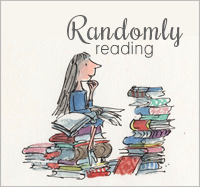










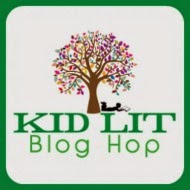



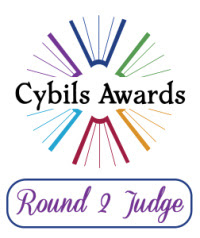
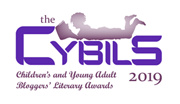

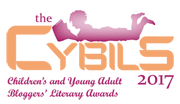


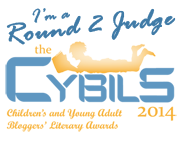
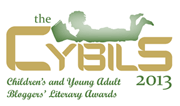
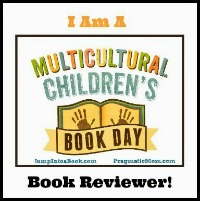


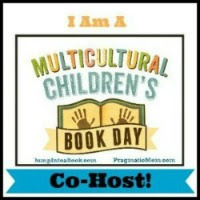

No comments:
Post a Comment